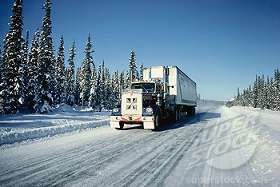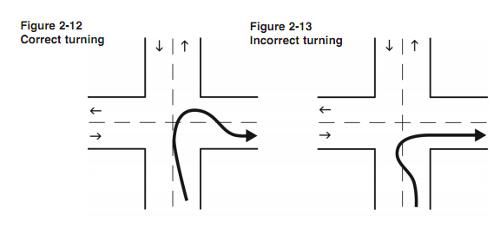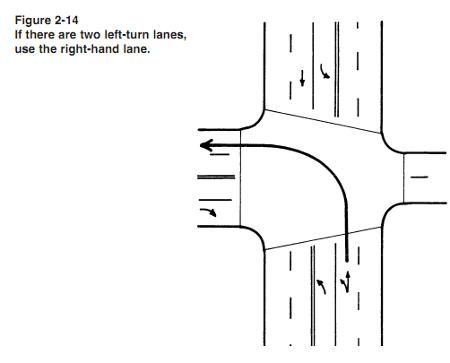Review Questions - Click On The Picture To Begin...

- Bridge clearance signs always account for 3 inches of packed snow
- Some road surfaces can cause a vehicle to tilt, but warning signs always account for that
- If you were able to clear a low bridge with a loaded trailer, you will be able to clear it with an empty trailer as well
- Road repaving or packed snow may reduce the clearance of the bridge since the sign was posted
Quote From The CDL Manual:
Hitting overhead objects is a danger. Make sure you always have overhead clearance.
Do not assume that the weights and heights posted at bridges and overpasses are correct. Repaving or packed snow may have reduced the clearances since the heights were posted.
The weight of a cargo van changes its height. An empty van is higher than a loaded one. That you got under a bridge when you were loaded does not mean that you can do it when you are empty.
If you doubt you have safe space to pass under an object, go slowly. If you are not sure you can make it, take another route. Warnings are often posted on low bridges or underpasses, but sometimes they are not.
Some roads can cause a vehicle to tilt. There can be a problem clearing objects along the edge of the road, such as signs or trees or bridge supports. Where this is a problem, drive a little closer to the center of the road.
Before you back into an area, get out and check for over-hanging objects, such as trees, branches or electrical wires. It is easy to miss seeing them while you are backing. (Also check for other hazards at the same time.)
- Whichever lane has fewer waiting vehicles
- The left lane
- Either lane
- The right lane
Quote From The CDL Manual:
Left turns: Make sure you have reached the center of the intersection before you start the left turn. If you turn too soon, the left side of your vehicle may hit another vehicle because of off-tracking. If there are two turning lanes, always take the right-hand turn lane. Do not start in the inside lane because you may have to swing right to make the turn. Drivers on your left can be more readily seen.
- None of these answers are correct
- Remain in the right lane and as close to the curb as possible, swinging into the oncoming lanes if necessary to complete the turn
- Swing left before making your turn to avoid using oncoming lanes
- Stop and activate your emergency flashers to let any vehicles behind you to pass until you have a clear opening
Quote From The CDL Manual:
Right turns:
Turn slowly to give yourself and others more time to avoid problems.
If you are driving a truck or bus that cannot make the right turn without swinging into another lane, turn wide as you complete the turn, as shown in Figure 2-12 on page 33. Keep the rear of your vehicle close to the curb. This will stop other drivers from passing you on the right.
Do not turn wide to the left as you start the turn, as shown in Figure 2-13 on page 33. A following driver may think you are turning left and try to pass you on the right. You may crash into the other vehicle as you complete your turn.
If you must cross into the oncoming lane to make a turn, watch out for vehicles coming toward you. Give them room to go by or to stop. However, do not back up for them, because you might hit someone behind you.










 TT On Facebook
TT On Facebook